https://drive.google.com/folderview?id=0B0aO-lMrWakJQlVEQTRDUUZVSzQ&usp=sharing&tid=0B0aO-lMrWakJY3hMMV9fUUlIV2M



https://drive.google.com/folderview?id=0B0aO-lMrWakJQlVEQTRDUUZVSzQ&usp=sharing&tid=0B0aO-lMrWakJY3hMMV9fUUlIV2M
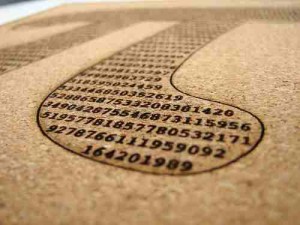
April 12th – 18th
8 hours – reading Neuro , The Magic Mirror of M.C. Escher, Dali, The Fractal Geometry of Nature, The Notebooks of Leornardo
2 1/2 hours – watching From Zero to Infinity: A History of Numbers
5 hours – observing at Olympia Waldorf School and interview with Tim Morrissey
30 min – online interview with Anita Lenges
4 hours – Calculated Poetics
In perhaps the busiest week of my life, I unearthed some startling revelations of the connection to our origins of numbers, the origins of modern math systems, and where they intersect as intuitive math manifests itself in the application of modern math class in a group of 10 year olds at the Olympia Waldorf School. I’ll begin with the interview and sit in with the 4th grade class at Waldorf that I attended on Friday. By recommendation of a friend, I found myself in contact with Tim Morrissey who got his masters in Mechanical Engineering at M.I.T. and worked as a Software Engineer, Environmental Consultant and Hazardous Waste Specialist, before beginning a farm in Olympia, which eventually led him to teach at Waldorf starting in 2005. He invited me in to observe the classroom and fit in time for questions between activities. I arrived at 7:45 Friday morning, him orienting me on the day’s progressions before joining with the morning greeting and assembly. I then sat and watched as he began a morning lecture reviewing the 3 day field trip they had just returned from on Whidbey Island for a potlatch hosted by the 4th graders at that Waldorf School. They then began writing ‘thank yous’ to special persons involved that made the trip wonderful. I offered help or advice when I could as they scrawled in cursive across their custom cut pieces of paper. They declared what animal tribe they were apart of, what its characteristics are, and how they will embody those characteristics as they return to their daily lives.
Mr. Morrisey then transitioned to the next activity by presenting a few math problems on the board. After working silently for some time, he then took answers from the audience, allowing others to jump him to help solve a part of the problem. The problem had something to do with dividing a group of 145 students into 7 groups of somewhat equal numbers as best they could (without dividing any students in half!). We then increased the number to 1325 students! Mr. Morrissey encouraged the students that “there are many paths to take to get to the right answer, all that matters is that you can get there.” At the conclusion of the exercise, he offered me a wink since I had come in on a day when they were not focusing on math when that was my focus.
During snack time, we sat down in the back and I asked him some questions. I began by asking him how old he was when he realized he loved numbers. He remembered having an affinity for them before even really having an idea of what it was; stacking legos, ordering things like toys in different arrangements (4s and 5s). His dad noticed his precocious number sense and then supported it by intellectualizing it, introducing formal math equations and problems, teaching him the rhetoric of the ivory tower elite. He said that probably his formal realization of his love of numbers came in high school with a teacher he was lucky enough to have for nearly every math class during that time. The teacher had a great sense of humor, acknowledging the important implications of math while also not shying way from its sometimes pointlessness and redundancy. His teacher supplied more math than he could get a hold of, always fueling his fire for more complex and more interesting problems. This carried him on into college in pursuit of engineering.
this teacher was also imparitive in his journey with math. Though he knew he loved math, his grad school professor introduced and explained it in such a way that Mr. Morrissey said one day it just clicked – this ‘intuitive’ sense of the numbers, patterns, and equations he’d been working with his whole life just came into focus and he could see how and why things were being done they way they were. This concreted his love for math and it led him to several jobs in civil engineering where he utilized these skills very well, and continues to do so today as a teacher.
I went out to recess with the kids and played a few games along with Mr. Lee before returning for second session just before lunch. Here, the kids continued work on some more thank you cards and I sat down with Mr. Morrisey for a few more questions. I asked him of the most notable or unique problem solving techniques that students had come up with themselves that he had seen. He relayed how he’s always fascinated by the way children will pick up and reassemble seemingly common sense ideas for adults into clever new iterations, sometimes producing the right result and sometimes not. He also told the story of a teaching exercise that shows the pattern of how to add all the digits between 1 and 100. It is revealed at the end that you can visualize it by writing out each number and then folding the piece of paper in half to see the correlating digits. At this point they are supposed to see the pattern of which numbers always match up, so he asks the class to add up the numbers up to 1000. he said a kid who was having some trouble exclaimed in astonishment, “We’re going to need a really long piece of paper!”
More to the point tho, he said he attempts to create flexibility with numeracy, the ability to see tendencies and then work in from their to a more precise answer. This utilizes intuitive number sense of proportion, and then supplements it with our more acute number sense of modern times. By working in groups and with diverse materials (from paints, to blocks, to treasure hunts outside) he says the kids get to work together, so that overlapping strengths and weaknesses supplement each other and the kids get to see many ways of working around a problem. This is valuable not only for learning math skills, but it shows us how to value each other as resources that can help us with our problem solving, therefore working together and having shared goals.
The last question I asked was about how the Waldorf School teaches to developmental stages both physical and mental. Through this conversation he explained Steiner’s (the founder of Waldorf) qualitative observation reasoning and I realized it resonated deeply with Goethean science, to which he replied that Goethe’s methodology heavily informed Steiner. I was amazed and quite pleased. I will be looking into the Why Waldorf Works texts online for further influence of how to articulate my essay’s exploration of this topic using Holdrege’s model of Goethean science.
Earlier in the week, I sat down with several textbooks I will be using to explore more personal ways to access and awaken our intuitive number sense. I looked through the books Dali , Leonardo’s Notebooks, The Fractal Geometry of Nature, and The Magic Mirror of M.C. Escher for segments that related to their methodologies and inspirations that informed their work having to do with multi-dimensions, proportion, and perspective. At this point, I think I will be able to relate how by using fractal geometry and Goethean science, we can develop an understanding of perspective and proportion as it relates to 2 dimensional portrayals of 3 dimensional plains (or objects). From here, we can see how the use of logarithms and proportions that are completely intuitive and observable physically guided the creations of great works of art by Escher, Dali, and daVinci. This will relate to the experience at Waldorf and my research on their curriculum with the art integration and visualizing problem sets as a means to establish and hold onto an intuitive sense of numbers as it integrates with the modern system. This will relate to Holdrege’s exact sensorial imagining section, and be a segway (or methodology) for how adults (or someone who has been tuned out of their intuitive number sense) to reawaken it through a series of multidimensional visualizing techniques to create art. And I sincerely hope that I am able to better articulate these thoughts at that time.

This poem ended up being a conversation between the Sphere reading and The Fractal Geometry of Nature by Benoit Mandelbrot that I’m reading for my field study. Mandelbrot’s observations and theories were ignored for a long time by the hosh-posh intellectual elites of his time due to the irrational number sets he was working with. Later, his work on fundamentals of fractal geometry in nature layed the ground work for computer graphics programming and the solutions to theoretical physics problems. Stanzas 42 – 67 from Sphere influence my poem with its nod to anonymity in the dream world, infinite forms of nature, and the author’s mention of overcoming adversity.
Bumble Fumble
Bumble, fumble
Mandelbrot was humbled
The fractal folds again
And we feel the rumble
Stumble across the infinite spill of the cosmos
Crumbles of bread sweets facilitate our osmosis
is…is…is…is
Moving round round round round
Making ripples in the air like
Sound sound sound sound
Moving forwards, round it, backwards and through
A sphere of influence hovering all around you
Freckled, speckled
Rocks and eggs
Like the freckles on your face
Arms
And legs
Infinite spheres spinning round and round
Bubbling, troubling
Wow. Wow.

May 5th – 11th
5 hours – reading Number Sense by Stanislaus Dehaene, Dali by Robert Descharnes
3 hours – video; The Dali Dimension by Joan Ubeda et. al, and Zero to Infinity: A History of Numbers by Edward B. Burger
1 hour – listening to Radiolab episode Numbers
4 hours – Calculated Poetics
3 hours – writing and revising term paper
This week got into some beefy stuff of the origins of mathematics and art produced out of exploration into the frontiers of mathematics today. I began the week by watching The Dali Dimension: Decoding the Mind of a Genius about Salvador Dali and the vast depth of knowledge he kept current with throughout his life about the great scientific discoveries of his time. He attempted to represent abstract ideas like Einstein’s theory of relativity and ideas from quantum physics as well as biological ideas like the discovery of the double helix as the structure of DNA. This continued late into his life with his last painting The Swallowtail which was inspired by the equations of catastrophe theory. Earlier in his work, he depicted 4th dimensional objects 2 dimensionally on canvas, relating the transcendental nature of these concepts to a spiritual or religious experience. His techniques and interest in fusing art and science to visualize concepts will serve as a main example of tapping into our instinctual math abilities as well as aiding in learning the typical concepts of our math curriculum. This may relate to the Waldorf philosophy and curriculum of math as well.
While in the school library searching for The Dali Dimension, I stumbled across a DVD lecture series called Zero to Infinity by Edward B. Burger, a professor and mathmetician from Williams College. The lectures are pleasant and delightful. Edward B. Burger makes the concepts easy to follow and his passion radiates through the screen. In it, he covers how the concept of number differs from that of numbers, explaining the numbers are to number as humans are to humanity. In the introduction, he explains how hard it is to actually define number and that no consensus of a definition exists. Numbers are abstract as they are concrete. He then begins explaining the history of numbers, and how concepts and counting systems evolved and led to great philosophical changes in people’s relation to the universe. It is a great, comprehensive suppliment to Number Sense and provides many concrete examples of alternative and historical number and math systems. His explanation of the Babylonian counting system fit perfectly with my story of passionately learning it in my 4th grade class from a wonderful teacher.
I also scheduled a sit in and interview with Tim Morrissey and his 4th grade class at Olympia Waldorf School this next Friday. I’ve also begun an interview by email with Anita Lengus, faculty member here at TESC, about the history of math education in the United States. She’s been quite willing and helpful despite a busy schedule, as has Tim.

April 28th – May 4th
4 hours – reading Number Sense by Stanislaus Dehaene and Doing Goethean Science by Craig Holdrege, The Measure and Construction of the Japanese House by Heino Engel
1 hour – researching the abacus and learning the Japanese abacus
2 hours – writing and revising term paper
4 hours – Calculated Poetics
I began writing my paper this week with an introduction on Sensing Boundaries. I reread the Craig Holdrege methodology of Goethean science to find connections to this process of engaging our intuitive number sense. The time i spent last week listening to Radiolab for cues on how to tell a good story paid off as I wrote an introduction I’m quite pleased with. It will lay a good groundwork for entering the conversation of what instinctual number sense is and how to engage it. After reading Number Sense this week, I’ve learned enough information to launch right into a discussion of what this intuitive number sense. That way I can define it well before I explore ways to awaken and engage it.
The book begins by explaining the number sense we see in other other species such as crows, chimps, dogs, an even horses and compares them to the abilities we see in infants. They are not that different and in fact have so much in common, that one can track the progress of number sense in these species (evolutionarily speaking) along with the growth stages of babies. It seems that infants enact the entirety of number sense evolution as they mature into adulthood in the same way that their embryos enact the entirety of evolution that came before them while in the womb.
The distinction comes when they begin to comprehend the concept of integers; fixed number values that allow for a linear concept of numbers, each digit with a fixed value. This begins to happen around the ages of 2 or 3. From there, quantities beyond 5 become understandable. From there, a child’s increasing abilities also mirror the entire evolution of number sense in human history, finally reaching the complex system of algebra of calculus we have now.
I will be able to explain this concept in the third section of my paper that relays the history of number systems and how they evolved from relying heavily on the instinctual logarithmic notion to the cognitive linear one.
I also did some research on the Japanese abacus as a part of a research paper in my other class, Chanoyu: Traditional Japanese Culture and the Way of Tea. I’m not sure how much of this will tie into my paper, but I would like to do a brief lesson on the abacus in my presentation. Learning the Japanese math and number system also provided fertile ground for the exploration of alternative math forms that may make its way into the history of mathematics section of my paper.
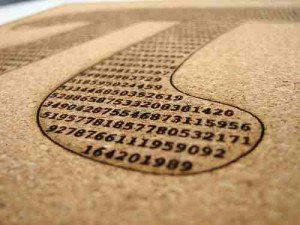
fractillated rocks everywhere on the shore
1,2,3 1,2,3 1,2,3,4….5?
so many rocks……
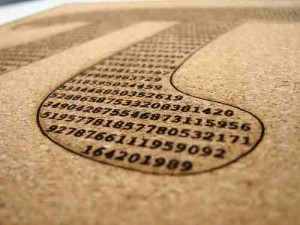
The Distance
the distance between the snap of a twig and a spear throw
the distance between learning language and creating meaning
the distance between a child’s fingers in the palm of the hand that’s holding them
the distance between the stories on the wrinkles of an old lady’s face
the distance between sight and sound
the distance between forethought and hindsight
the distance between holding hands and making love
the distance between umbilical chord and bellybutton
the distance between breaths on a cold night
the distance between the stars and the moon
the distance between i love you’s and coulda-woulda-shouldas
the distance between me and you

Rippling Toward Infinity
1
10
100
1000
1000000
1000000000
1000000000000
1000000000000000
1000000000000000000
10000000000000000000000
1000000000000000000000000000
1000000000000000000000000000000000000
10000000000000000000000000000000000000000000000
10000000000000000000000000000000000000000000000000000000000
one
with zeros rippling towards infinity
a splash in a pond
you can count
you can count more
you can count the ripples in the pond
a one with hollow zeros trailing behind
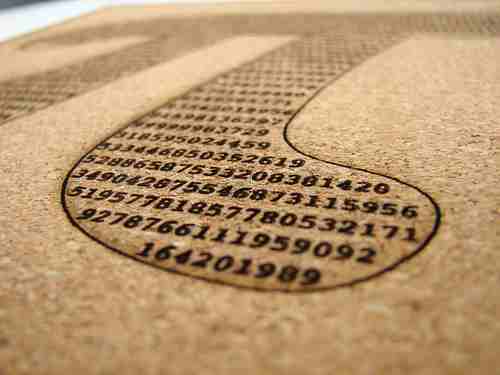
Apr 21 – 27
3 hours – collecting resources and materials and programming eAlphabet page
4 hourse – Calculated Poetics
4 hours – reading Magic Mirror of M.C. Escher, Fractal Geometry of Nature,
4 hours – listening to Radiolab
I spent the week preparing to launch into an in depth exploration of different math systems, scheduling out the next few weeks of the field study to dedicate time to each system. This way, I will be versed enough to possibly teach the methods in class during my presentation week 10 and also gain enough background knowledge to see how it applies to my general topic of intuitive mathematics. On the docket immediately is learning the Abacus as well as a brief history of its development. But that is for next week.
I spent the week this week listening to various Radiolab episodes to hear good examples of storytelling narrative to use for my introduction, as a way to convey a lot of information yet push the narrative forward in an intriguing way. I then set about writing the intro with the Sensing Boundaries of the Holdrege paper where I describe my personal experiences with math that led to my pursuing this field study question.
I also spent the week reformatting (or trying to reformat) my eAlphabet page with mixed success. My poetry observed entries do not seem to be showing up, which is a bummer because they are great supplementary resources.
The book Number Sense arrived in the mail this week and I will launch into it over next week as it forms the second section that segways from the intro in my paper. I read portions of Magic Mirrow of M.C. Escher and Fractal Geometry of Nature just to get my cogs turning.
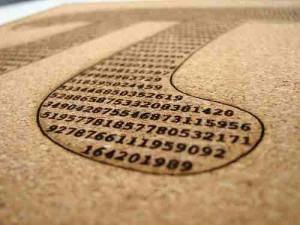
A good friend of mine published this radio report about his friend’s experience with theoretical mathematics. It was published at Goddard College.